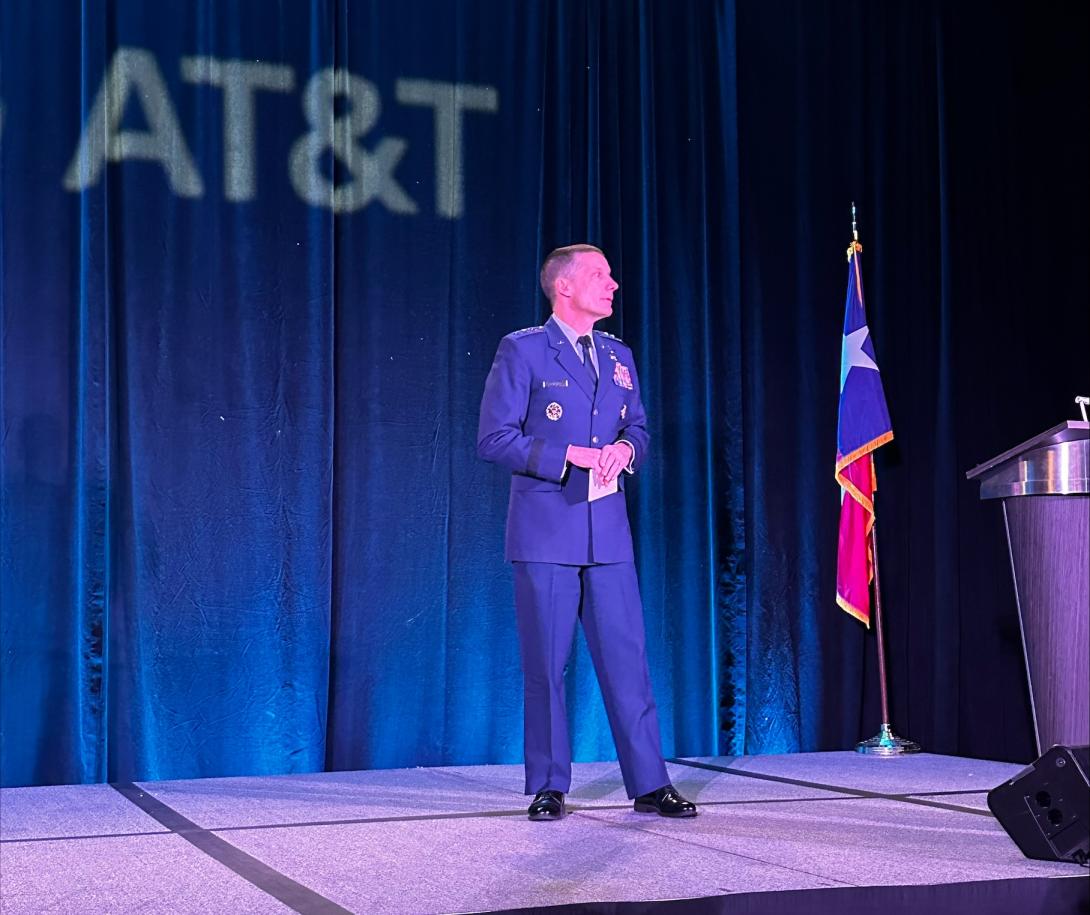Industry Has a Key Role To Play in Data Improvements
For Lt. Gen. Robert J. Skinner, director, Defense Information Systems Agency and commander, Joint Force Headquarters-Department of Defense Information Network, it is all about the data—and not only the United States’ efforts with data, but defending against the nation's adversaries, such as the People’s Republic of China, which is conducting the world’s largest disinformation campaign against the United States. That information warfare is not just targeted at our Defense Department, it is targeting the nation.
“This highlights the strategic importance of data,” Gen. Skinner noted during the opening day of the AFCEA's Alamo Chapter's annual ACE conference. “It is what we do with data, how we turn that into information, how we turn that into intelligence and how we turn that into decision superiority.”
Gen. Skinner said he sees data sharing improvements, buoyed by industry, aiding in current global conflicts such as the Russian invasion of Ukraine and in the Hamas-Israel war. “We start with the transport and Starlink and the capability that Starlink is providing to the Ukrainians,” he offered, referring to the satellite internet constellation operated by SpaceX. “You think about the information sharing that is going on between allies and partners, given that positional and strategic advantage at times.”
The link to sharing access and data operationally with U.S. allies and partners, through the Mission Partner Environment, or MPE, is continually evolving. Here, DISA Global is working to increase bandwidth for MPEs, and Joint Force Headquarters Department of Defense Information Network (JFHQ-DODIN), along with the Air Force and other organizations, are working to provide more security to certain, key MPEs. In addition, the United States, which must trust allies’ infrastructure and be able to validate their security, is working on an enterprise-type capability for federated environments.

It is what we do with data, how we turn that into information, how we turn that into intelligence and how we turn that into decision superiority.
“The Mission Partner Environments are part and parcel to everything that we do, whether it's competition, crisis or conflict,” Gen. Skinner emphasized. “It is the ability to share that information, which requires some trust on all sides.”
Meanwhile, data sharing can be as simple and vital as using a video teleconferencing (VTC) link—but it still can be a challenge to employ reliable video capabilities.
“In the last week, most of my attention has been on tried and true video capabilities,” the director noted. “When I was a squadron commander ,… there's two things that could never go right: the VTC capability for the wing commander, and the public address system. Even today as a three star, the ability of a VTC to not work at the right time raises its ugly head. That's the data that's being pumped through that is enabling critical key decisions with all the operations and the conflicts that are going on around the world.”
On the whole, DISA will continue to build data capacity, especially through contracts with industry. The agency issued $6 billion in contracts over the last year, with $1.9 billion of that going to small businesses. Gen. Skinner stressed to the software industry—with the White House Better Contracting Initiative in mind–that DISA will be emphasizing software licensing improvements, including government-wide enterprise licenses. This effort is designed to decrease costs and improve what the government receives.
“Those who've heard me talk over last couple of years know that I'm on the bandwagon towards software licensing and best value for the department,” the director stated. “We are still not there. And the companies who aren't [supplying best value in software licensing], you know who you are. I won't publicly shame you. The White House and the federal government through [the General Services Administration] is going to start looking at government-wide enterprise licenses. That's coming to a theater or venue near you soon.”
On the data transport side, DISA, which looks after an estimated 41,000 operational circuits, is examining circuit upgrades. And in places where the department might not yet have transport or connectivity, DISA is considering commercial service offerings and vendors who are laying their own fiber and infrastructure in the world.
To the companies assisting DISA retire its legacy Time Division Multiplexing connections and switching to Internet Protocol (IP) encryption-based solutions, Gen. Skinner urged for speed of those replacements. “Help us go faster and help us understand" the complexities from an enterprise standpoint, he urged.
The Joint Warfighting Cloud Capability, or JWCC, contract has been in place for a year, with 38 contracts awarded for $263 million and another 38 contracts in the works. In some cases, DISA has executed those contracts quickly, in as fast as eight days, the general said.
To address certain missions and applications that need to be in an on-premise storage or cloud environment, DISA’s STRATUS capability is also advancing. The agency is working with industry vendors that offer on-premise, in a hybrid model capabilities.
“The OCONUS [outside of the contiguous United States] cloud is next,” Gen. Skinner noted. “How do we leverage commercial co-location sites? How do we leverage some of our on-premise data centers, when we think about strategy?”
Underneath all the data is the department’s effort to protect data through its zero-trust initiatives. For DISA, which is continuing its Thunderdome zero-trust effort, “it is more than just an OTA [other transaction authority],” he said. The agency is working with the Air Force to leverage zero-trust solutions, such as software defined wide area networks and secure access secure edge. “We are well on our way to meeting the department mandate of 2027,” the general said.
Lastly, since a lot of development security operations (DevSecOps) software creation still happens at Impact Level 2, Gen. Skinner urged industry to make sure that those software environments are secure—“better than it is today”—whether it be for applications or missions.






Comments